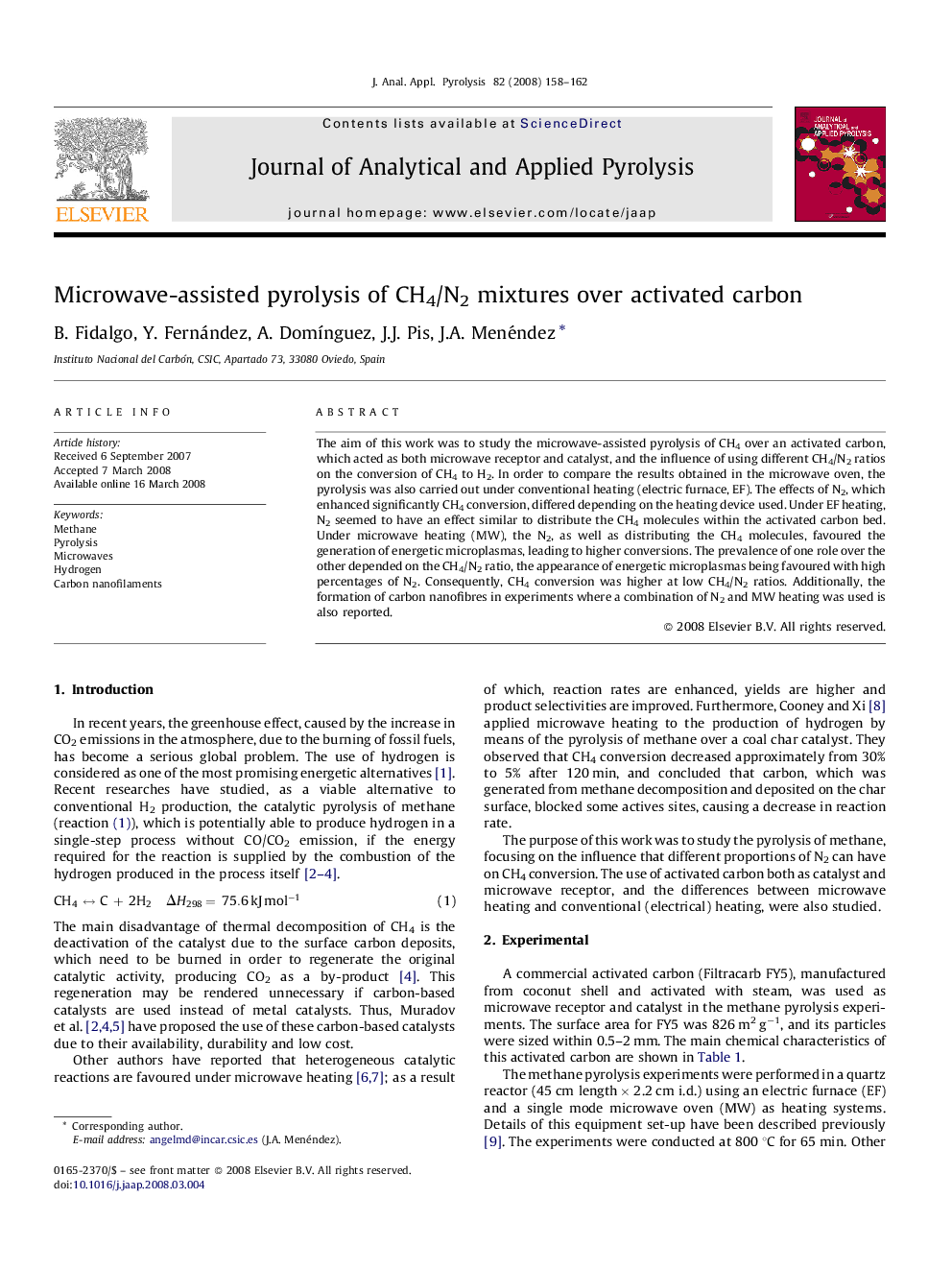| Article ID | Journal | Published Year | Pages | File Type |
|---|---|---|---|---|
| 1197700 | Journal of Analytical and Applied Pyrolysis | 2008 | 5 Pages |
The aim of this work was to study the microwave-assisted pyrolysis of CH4 over an activated carbon, which acted as both microwave receptor and catalyst, and the influence of using different CH4/N2 ratios on the conversion of CH4 to H2. In order to compare the results obtained in the microwave oven, the pyrolysis was also carried out under conventional heating (electric furnace, EF). The effects of N2, which enhanced significantly CH4 conversion, differed depending on the heating device used. Under EF heating, N2 seemed to have an effect similar to distribute the CH4 molecules within the activated carbon bed. Under microwave heating (MW), the N2, as well as distributing the CH4 molecules, favoured the generation of energetic microplasmas, leading to higher conversions. The prevalence of one role over the other depended on the CH4/N2 ratio, the appearance of energetic microplasmas being favoured with high percentages of N2. Consequently, CH4 conversion was higher at low CH4/N2 ratios. Additionally, the formation of carbon nanofibres in experiments where a combination of N2 and MW heating was used is also reported.
